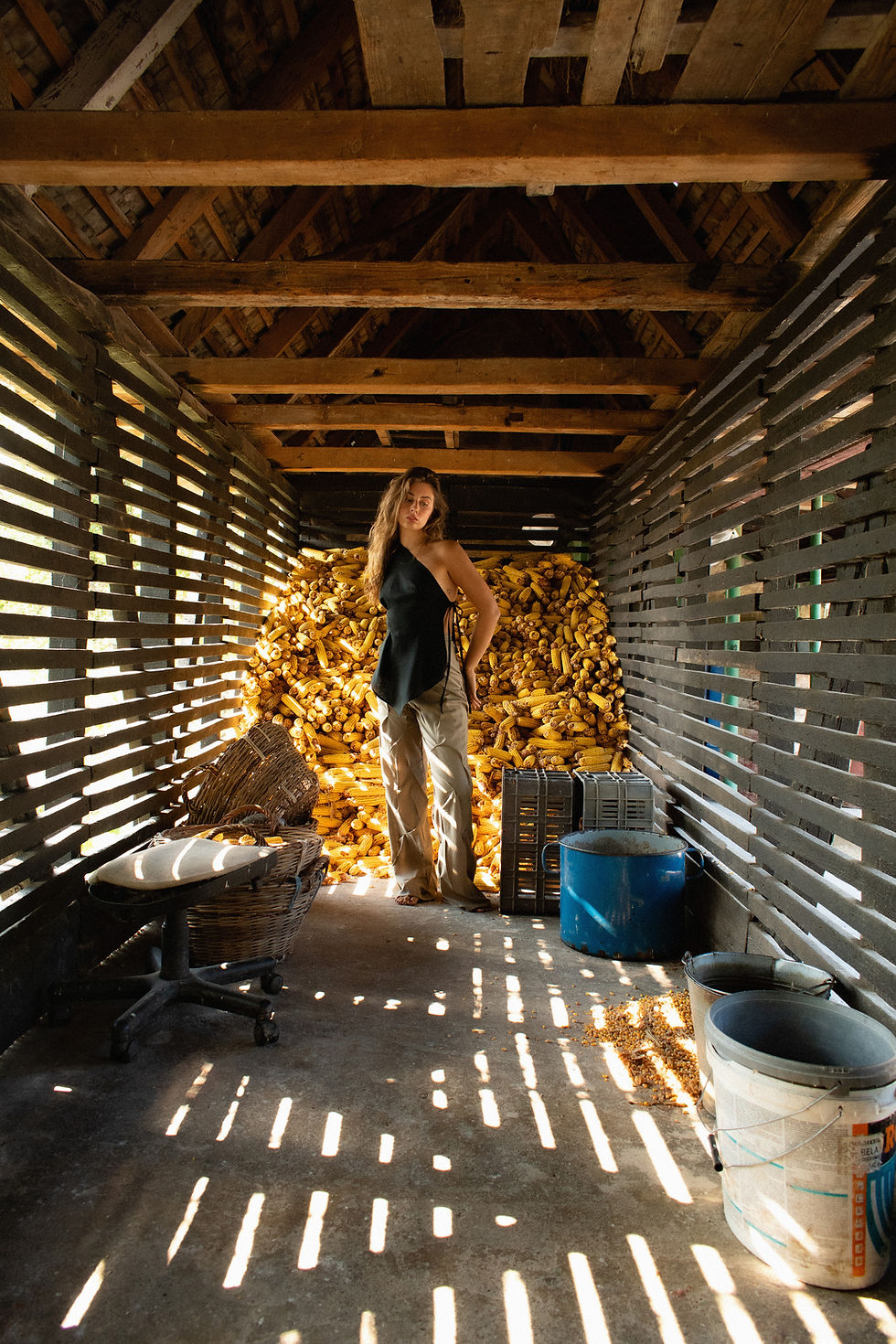Aleksandra Mećava: Inner Sanctuary
- Savina Ražnatović
- Apr 11
- 2 min read
Curated by Savina Ražnatović
Exhibition Dates: May 8th – May 29th, 2025
Opening: May 8th, 2025 at 19:00
Location: Dom Omladine, Kosovska 17, Velika Plana
In her upcoming exhibition, Unutrašnje svetilište (Inner Sanctuary), artist Aleksandra Mećava interweaves personal memory with the symbolism of medieval sacral art. Through a series of carefully rendered works on paper, she moves beyond merely documenting the stone reliefs of Serbian churches of the Raška school. Instead, she deconstructs established symbols and reinvigorates them with nuanced shifts in ornamentation and form, creating a dialogue that bridges historical legacy with contemporary perspectives.
Grounded in a personal archival practice, Mećava treats historical symbols as dynamic entities open to continual reinterpretation rather than as fixed relics. Born in Banja Luka—a city steeped in the medieval cultural heritage of the Nemanjić dynasty and intertwined with complex historical, political, and identity narratives—she draws deeply on both her lived experience and the broader tapestry of cultural memory. With each mark unfolding like a visual narrative, her distinctive drawing language evokes organic forms such as vines, leaves, and other natural motifs, transforming static references into realms imbued with emotional charge.
At the core of Unutrašnje svetilište is a reconsideration of inherited forms, not as artifacts to be preserved, but as mutable visual languages. Mećava’s drawings engage with the sculptural logic of medieval carvings not through mimicry, but through subtle displacement. Lines loosen, edges soften, and ornamentation unravels into gesture. Rather than presenting a singular historical voice, the works suggest a polyphony of echoes, distortions, and quiet dissonances that suspend meaning instead of resolving it. Among the sources evoked is the frifora of the Studenica Monastery, a canonical example of Raška school carving, here rendered not as fixed icon but as a porous symbol—open to introspection, reactivation, and drift.
Installed within the community-oriented setting of Dom omladine Velika Plana, the exhibition unfolds through spatial intimacy rather than spectacle. The drawings do not impose themselves. Instead, they accumulate gradually, like murmurs that shift between material presence and memory’s residue. Here, drawing becomes not only a medium but a method—an excavation of the past shaped by the pressures of the present.
As curator Savina Ražnatović observes, Mećava’s practice does not preserve history as static memory, but reanimates it as “a living and changeable material of artistic expression.” The works function as visual journals and emotional thresholds—spaces where personal rupture is reconfigured through the formal codes of sacred art. A central sequence within the exhibition revolves around the motif of the portal, conceived not merely as architectural reference but as inward passage. This series progresses from monochrome studies of light, through transitional forms, and culminates in golden tonalities suggesting moments of interior illumination.
Aleksandra Mećava, born in Belgrade in 1999, is an emerging contemporary artist whose work explores symbolic systems and narrative form. A graduate of the Faculty of Fine Arts at the University of Arts in Belgrade, she has received awards including a portrait prize at the Triennial of Portraits and Self-Portraits and recognition for participatory projects such as Istetoviraj grad in Banjaluka. She has exhibited extensively across Serbia and abroad, with recent solo presentations including Oda procesu (Ode to the Process) at the Dušan Starčević Memorial Gallery and Stara Kapetanija, Zemun.









Comments